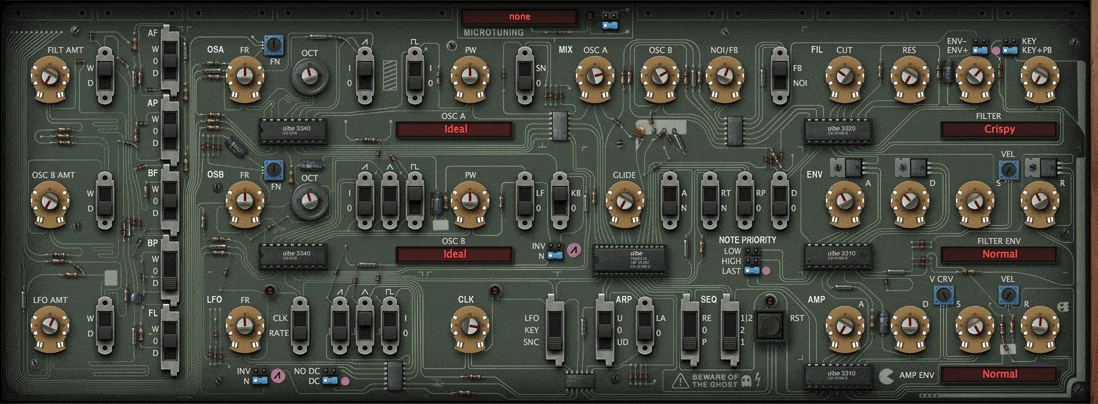“Attention to detail is important.” Greg Scarth tests out U-he’s tribute to the classic Prophet-5.
Yes, in architectural terms Repro-1 is a very simple synth by today’s standards, even with the bits and pieces added by u-he, and that may or may not be an issue depending on your expectations and stylistic needs. As ever, though, it’s the sound that counts, and in that department Repro-1 is an unmitigated success. Most Popular Most Shared. This copy of u-he Repro was bought during the 2021 Native Instruments New Years Sale where everything was priced very low. This copy comes with both Repro-5 and Repro-1, a polyphonic and monophonic synth, respectively. It's a great analog-sounding synth with a lot of quality presets that can be used on nearly any song.

The simpler the concept, the more important it is to polish the finer details. U-he announced the version 1.1 update of their Repro-1 plugin at last year’s Superbooth show, but kept us waiting more than half a year before the final version finally saw release.


Released in 2015, Repro-1 is the Berlin-based company’s tribute to the classic Sequential Circuits Pro-One. Version 1.1 fixes a few minor bugs and introduces a handful of relatively small features (the most substantial of which is probably the addition of microtuning). So why such a long wait since the update was announced? The biggest news is signalled by the subtle change to the product’s name: Repro-1 has been renamed Repro, reflecting the fact that it now includes both the original Repro-1 instrument and the all-new Repro-5 plugin. As the name suggests, Repro-5 is a tribute to the SCI Prophet-5, also designed by Dave Smith and widely considered one of the best polyphonic synths of all time. The newly renamed Repro instrument is now two synths for the price of one: Repro-1 remains “unashamedly monophonic”, while Repro-5 offers eight-voice polyphony (increased from the Prophet-5’s five voices) plus a fairly monstrous unison mode.
As the name suggests, Repro-5 is a tribute to the Sequential Circuits Prophet-5, designed by Dave Smith and widely considered one of the best polyphonic synths of all time.
It’s worth pointing out that although the Pro-One came just three years after the Prophet-5 and shared similar features on paper (two VCOs per voice, 4-pole low-pass filter…), Repro-5 isn’t just a case of taking the Repro-1 plugin and making it polyphonic; the new plugin is based on a similar component-level modelling approach to Repro-1, reflecting the differences between the two synths. As such, you’d expect Repro-5 to sound very close to the vintage models U-he analysed during the development process, but what’s more important to most users is whether it sounds good. Repro-5 hits the mark on both points, turning its hands to everything from classic analogue staples (as exemplified by the ‘historic’ bank of original Prophet-5 presets from 1978) through to Vangelis-inspired modulated tones (‘LUF Pixelcode’) and bold FX (‘PS Big Filter Sweep’).
The interface is simple, classic fare (at least on surface level – more of which in a moment) and the wide sweet spot of the original hardware is reflected in software, making it easy to coax out a broad range of sounds from the expected vintage timbres through to surprisingly modern, almost digital-sounding tones thanks to the synth’s PolyMod section, which allows for audio-rate modulation of parameters including VCO A frequency and VCF cutoff.

The front panel controls themselves would probably have been sufficient, but the real depth is revealed via the Tweaks view carried over from Repro-1, which offers a glorious circuitboard-inspired interface allowing access to a similar range of slightly more nerdy parameters: for instance, you can invert the sawtooth waves of the LFO or oscillator B, pan the outputs of the eight voices individually, or choose from subtly different modes for the oscillators, filter and envelopes, reflecting the variations between different revisions of the original hardware.

Repro-5 is undeniably CPU intensive and if you were being picky you could argue that just two slots in the modulation matrix is slightly restrictive, but that really would be missing the point. If you want lower CPU load or a more comprehensive feature list there are other synths for that. If you want an excellent tribute to an iconic synth, attention to detail is important. Repro-5 ticks all the boxes.
U-he Repro-1
Repro, $149, u-he.com